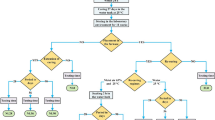Abstract
The implementation of concrete and its association with a release agent influence the aesthetics of the concrete facings. The mineral oils tend to be replaced by vegetable formulations, to reduce the impact of the substances spilled in the environment. From a technical point of view, it is important to characterize the action of these new formulations at the interface concrete/oil/formwork. Two performing techniques have been used to study the physico-chemical processes, the tribometry and electrochemical impedance spectroscopy. The correlation of the results obtained allowed to improve the understanding of the mechanisms involved at the interface mould/oil, in connection with the use of an acidifier in the formulation.
Résumé
La mise en œuvre du béton et son association avec un agent de démoulage, influence l’esthétique des parements en béton. Les huiles minérales tendent à être remplacées par des formulations à base végétale, afin de réduire l’impact des substances rejetées dans l’environnement. Sur un plan technique, il est important de caractériser le mode d’action de ces nouvelles formulations, à l’interface béton/huile/coffrage. Les travaux s’appuient notamment sur l’utilisation de deux techniques performantes pour étudier les phénomènes physico-chimiques, la tribométrie et la spectroscopie d’impédance électrochimique. La corrélation entre les résultats obtenus permet d’améliorer la compréhension des mécanismes impliqués à l’interface de démoulage, en relation avec l’utilisation d’un acidifiant dans la formulation.



















Similar content being viewed by others
References
CimBéton (2005) La maîtrise esthétique des parements en béton. T49, Collection technique
SUMOVERA; Application of vegetable-oil based concrete mould release agents. (VERA’s), State of the Art Document, Feb. 1999, Chemiewinkel UvA (IVAM)
Libessart L (2006) Influence de la composition des agents de démoulage à l’interface coffrage/béton – Impact sur l’esthétique des parements en béton. PhD Thesis in French, University of Artois
Lemaire G, Escadeillas G, Ringot E (2002) Evaluating concrete surfaces using image analysis processing. Construction and Building Materials, Elsevier
Djelal C, Vanhove Y, De Caro P, Magnin A (2002) Role of demoulding agents during self-compacting concrete casting in formwork. Mater Struct 35(252):470–476
Gabriell C (1980) Solartron instrumentation group monograph. The Solartron Electronic Group Ltd., Farnborough, England
Brug GJ, Van den Eeden ALG, Sluyters-Rehbach M, Sluters JH (1984) The analysis of electrode impedances complicated by the presence of a constant phase element. J Electroanal Chem 176:275–295
Poulenat G, Sentenac S, Mouloungui Z (2003) Fourier-transform infrared spectra of faty acid salts. Kinetic of high oleic sunflower oil saponification. J Surfact Deterg 6(4):305–310
Kralchevsky PA, Denkov ND, Todorov PD, Marinov GS, Broze G, Mehreteab A (2002) Kinetic of triglyceride solubilization by micellar solutions of nonionic surfactant and triblock copolymer. Langmuir 18:7887–7895
Salager J-L (2002) Surfactifs types et usages, Cahier FIRP N°F300-A, pp 18–20
Rabinovitch EB, Lacatus E, Summers JW (1984) The lubrification mechanism of calcium stearate/paraffin wax systems in PVC compounds. J. Vinyl Technol 6(3):98–103
Jacquet M, Georges JM, Mathia T (1974) Adsorption sur un solide d’un compose polaire à partir d’une solution non polaire. Revue de l’Institut Français du Pétrole XXIX:715–729
Acknowledgements
The authors gratefully acknowledge Jean-Baptiste Jorcin, Engineer in the CIRIMAT, who helped to perform the electrochemical impedance measurements and the company CHRYSO S.A. for funding this study.
Author information
Authors and Affiliations
Corresponding author
Rights and permissions
About this article
Cite this article
Djelal, C., de Caro, P., Libessart, L. et al. Comprehension of demoulding mechanisms at the formwork/oil/concrete interface. Mater Struct 41, 571–581 (2008). https://doi.org/10.1617/s11527-007-9268-3
Received:
Accepted:
Published:
Issue Date:
DOI: https://doi.org/10.1617/s11527-007-9268-3




